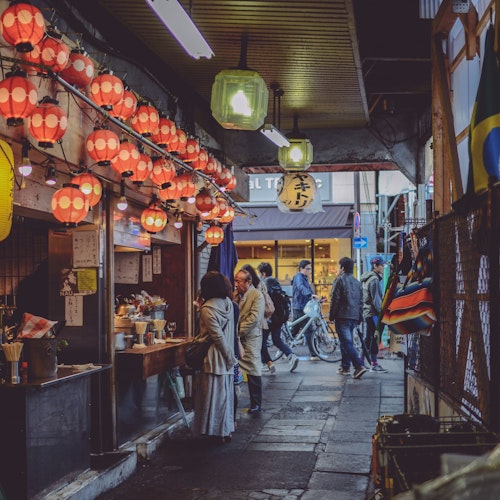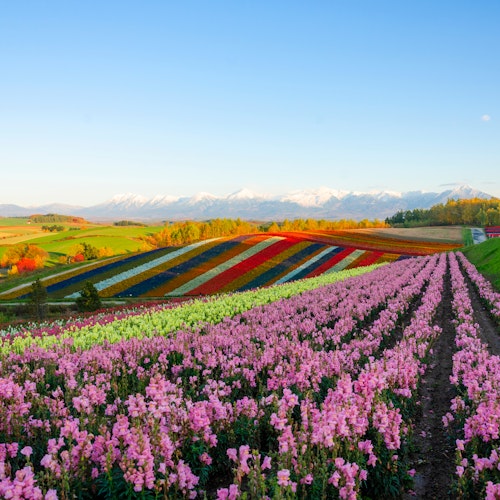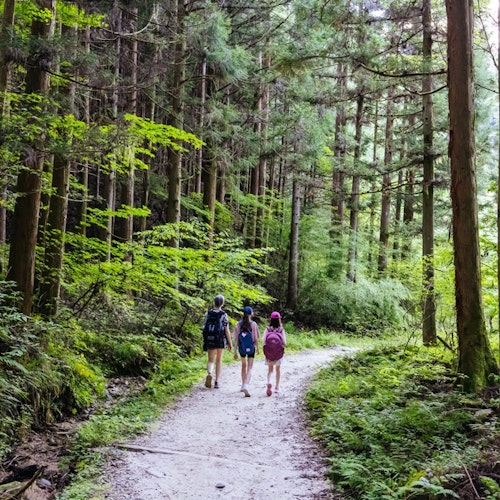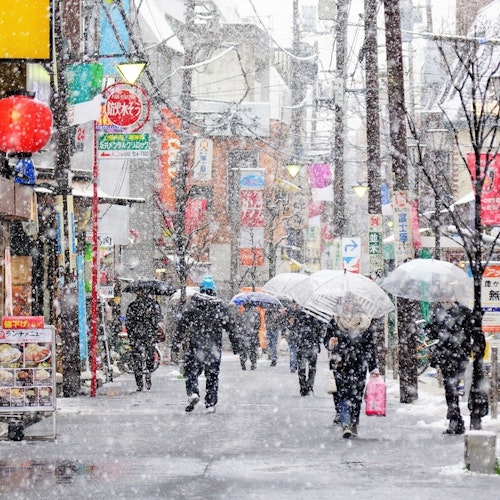
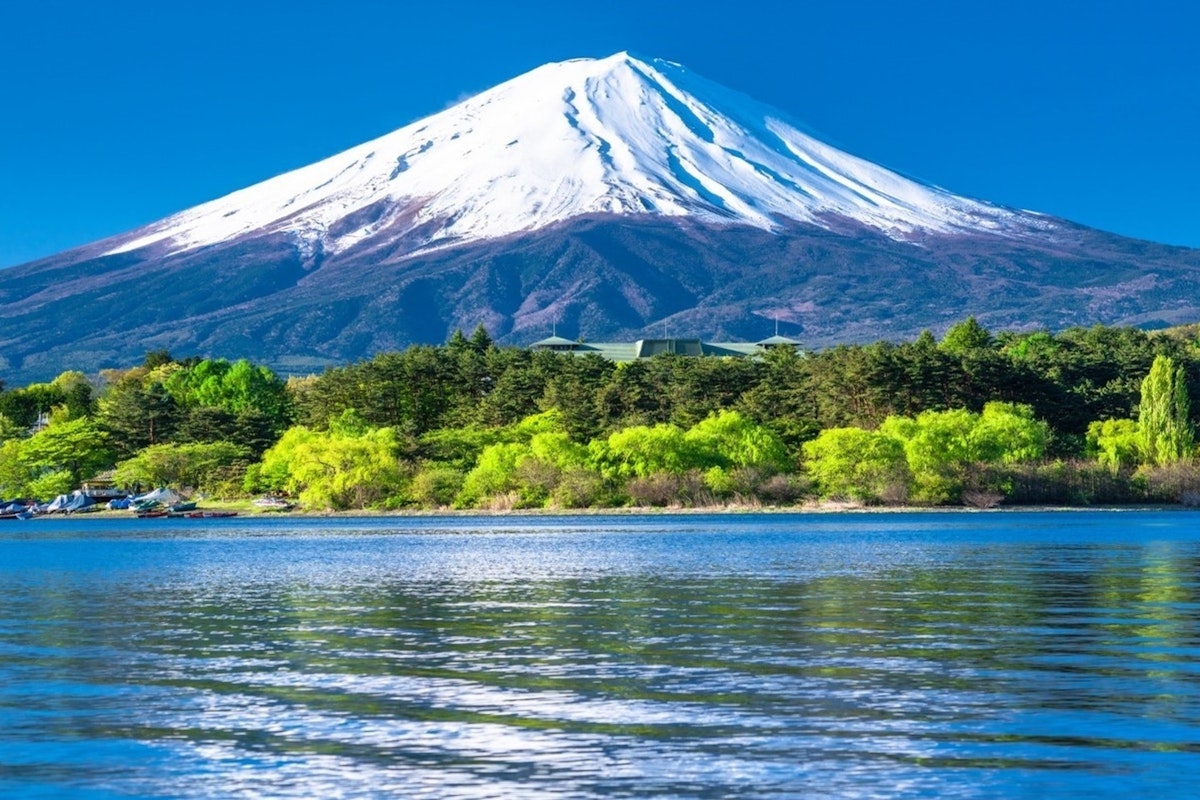
Mount Fuji, Japan's iconic 3,776-meter (12,389-foot) peak, transforms into a formidable alpine challenge during winter months. While summer sees hundreds of thousands of visitors, winter climbing is reserved for experienced mountaineers willing to face extreme conditions. This comprehensive guide covers everything you need to know about attempting a winter ascent of Mount Fuji.
Winter climbing offers a completely different experience from the crowded summer season. You'll encounter pristine snow-covered landscapes, absolute solitude, and challenging conditions that test your mountaineering skills. The views can be spectacular, with crystal-clear visibility on good weather days and the mountain's true alpine character on full display.
The silence is profound. Where summer trails echo with hundreds of voices, winter Mount Fuji stands in majestic isolation. Fresh powder crunches beneath your crampons, and you might spend an entire day without seeing another soul. This is mountaineering in its purest form, where you rely entirely on your skills, judgment, and preparation.

The winter climbing season technically runs from October through May, when the mountain is closed to casual hikers. However, the most popular months for experienced climbers are:
December to February: Deepest snow conditions and most stable weather patterns
March to April: Longer daylight hours but potentially more unstable weather
Late May: Transition period before official summer season opening
Winter ascents of Mount Fuji require:
Previous winter mountaineering experience in similar conditions
Ice axe and crampon proficiency with demonstrated self-arrest skills
Navigation skills including map, compass, and GPS usage in whiteout conditions
Cold weather camping experience if planning an overnight ascent
Physical fitness equivalent to hiking 10+ miles with significant elevation gain
This is not a beginner's winter climb. Many experienced mountaineers recommend completing several smaller winter peaks in Japan before attempting Mount Fuji.

While summer climbing requires no permits, winter climbers must:
Submit a climbing plan (tozan-todoke) to local police or mountain authorities
Register at trailhead stations when beginning your climb
Carry identification and emergency contact information
Notify authorities upon safe return to prevent unnecessary rescue operations
Some prefectures require specific permit applications. Check with the Yamanashi or Shizuoka prefectural police depending on your chosen route.
The most popular winter route, starting from the Fuji Subaru Line 5th Station (2,305m):
Distance: Approximately 14 km round trip
Elevation gain: 1,471 meters
Typical duration: 10-15 hours round trip
Difficulty: Advanced - exposed ridges, steep sections, avalanche terrain
The Yoshida Trail offers the most established path with some infrastructure remaining visible under snow. However, mountain huts are completely closed, offering no emergency shelter.

The steepest and shortest route from Fujinomiya 5th Station (2,400m):
Distance: Approximately 9 km round trip
Elevation gain: 1,376 meters
Typical duration: 8-12 hours round trip
Difficulty: Advanced to expert - very steep, technical sections, high avalanche risk
This route requires excellent crampon technique and is definitely not recommended for first-time winter climbers of Mount Fuji. The steepness that makes it efficient in summer becomes a liability in winter, where falling on hard-packed snow or ice could have catastrophic consequences. Every step demands attention and proper technique.
The longest route with the most elevation gain:
Distance: Approximately 19 km round trip
Elevation gain: 2,336 meters
Typical duration: 12-18 hours round trip
Difficulty: Expert - extreme length, significant avalanche terrain, poor visibility markers
This route is only recommended for highly experienced winter mountaineers with excellent physical conditioning. The sheer duration of exposure to winter conditions multiplies every risk, and the lower starting elevation means you'll spend more time in potential avalanche terrain before reaching the relative safety of the summit ridge.

Mandatory gear includes:
12-point crampons with anti-balling plates (plastic mountaineering boots compatible)
Ice axe (60-70cm length) - leash optional but recommended
Mountaineering helmet to protect against falling ice and rockfall
Avalanche transceiver (beacon), probe, and shovel
GPS device with downloaded maps and extra batteries
Headlamp with extra batteries (winter drains batteries faster)
Climbing harness and rope for some technical sections (optional but recommended)
The layering system for extreme cold and wind:
Base layers:
Merino wool or synthetic thermal underwear (top and bottom)
Wool or synthetic socks (bring extra pairs)
Liner gloves
Insulation layers:
Fleece or synthetic insulated jacket
Down jacket (high-fill power for warmth-to-weight ratio)
Insulated pants or thick fleece pants
Outer shell layers:
Waterproof, windproof hardshell jacket (Gore-Tex or equivalent)
Waterproof hardshell pants with full side zips
Mountaineering gloves (bring backup pair)
Balaclava or face mask
Warm hat that fits under helmet
Ski goggles (essential for whiteout conditions)

If planning an overnight climb:
4-season mountaineering tent rated for extreme wind and snow
Sleeping bag rated to -20°C (-4°F) minimum
Insulated sleeping pad (R-value 5+)
Snow stakes and guy lines for tent anchoring
Stove suitable for cold weather (liquid fuel preferred)
Insulated water bottles or thermos
High-calorie emergency food
Winter temperatures on Mount Fuji are brutally cold by any standard. Summit temperatures range from -20°C to -30°C (-4°F to -22°F) on a typical winter day, but that's just the beginning of the story. Wind chill regularly drops temperatures to -40°C (-40°F) or lower, creating conditions where exposed skin can develop frostbite within minutes.
Wind speeds regularly exceed 30 meters per second (67 mph), with gusts over 50 meters per second (112 mph) documented frequently. These aren't gentle breezes—they're forces that can literally knock you off your feet if you're not braced properly. Precipitation falls primarily as snow, often mixed with ice particles that sting exposed skin like tiny needles.
Check multiple weather sources before attempting your climb:
Japan Meteorological Agency (JMA) for official forecasts
Mountain-specific forecasts from services like Mountain-Forecast.com
Satellite imagery to track approaching weather systems
Local climbing reports from recent ascents
Weather can change rapidly. Always have a turnaround plan if conditions deteriorate.

Avalanches are a serious threat on Mount Fuji in winter:
Most dangerous areas: Slopes between 30-45 degrees, particularly on the Fujinomiya and Subashiri routes
High-risk periods: After heavy snowfall, during warming trends, and on wind-loaded slopes
Required knowledge: Understand avalanche terrain, practice companion rescue, carry proper equipment
Consider taking an avalanche safety course before attempting winter climbs.
Acute Mountain Sickness (AMS) can occur even at Mount Fuji's relatively modest altitude:
Symptoms: Headache, nausea, dizziness, fatigue, shortness of breath
Prevention: Proper acclimatization, gradual ascent, adequate hydration
Treatment: Descent to lower elevation if symptoms worsen
The rapid elevation gain on Mount Fuji (all routes gain 1,300-2,300m) increases AMS risk.
Understanding rescue limitations:
Helicopter rescue: Weather-dependent and may not be possible for days
Ground rescue: Time-consuming and dangerous for rescue teams
Mountain huts: Completely closed with no emergency access
Cell phone coverage: Unreliable, especially at higher elevations
Self-rescue capability is essential. Carry emergency bivouac gear even on day climbs.

Start your training program three to four months before your planned climb. Build your hiking capacity with weighted pack training, gradually increasing to 15 kilograms (33 pounds) carried over eight or more hours.
Stair climbing with a loaded pack simulates the continuous elevation gain you'll experience on Mount Fuji. Running or cycling builds your aerobic base—aim for three to four sessions weekly. If possible, train at elevation or use altitude simulation, though this is optional for most climbers.
The key is consistency and progressive overload. Your body needs time to adapt to the demands of winter mountaineering, and cramming training into the last few weeks doesn't work. Think of training as practice for the real thing, because that's exactly what it is.
Estimated expenses for a winter ascent:
Equipment: ¥50,000-200,000 ($350-1,400) if purchasing new gear
Transportation: ¥5,000-15,000 ($35-105) from Tokyo
Accommodation: ¥3,000-10,000 ($20-70) per night in Kawaguchiko area
Guide service: ¥30,000-80,000 ($210-560) per person for guided climb
Insurance: ¥2,000-5,000 ($15-35) for mountain rescue coverage
Food and supplies: ¥3,000-8,000 ($20-55)
Total estimate: ¥93,000-318,000 ($650-2,225) depending on whether you need gear and use a guide.
Winter access requires careful planning:
Fuji Subaru Line: Closed to private vehicles in winter; must walk/ski from gate
Private vehicle: Can drive to winter closure gates at each station
Bus service: Limited or non-existent in winter months
Taxi services: Available from Kawaguchiko or Gotemba stations (expensive)
Most climbers use rental cars or private vehicles for winter access.

For most climbers attempting winter Mount Fuji, guided services offer significant advantages. Professional guides bring safety expertise through professional assessment of conditions and risks that only comes from extensive experience.
Their local knowledge provides route-finding capability in poor visibility that can't be gained from maps alone. Groups often include rental of technical equipment, reducing your upfront costs. Emergency response training in mountain rescue and first aid provides an extra safety margin. Perhaps most importantly, guided climbs have higher success rates due to better planning and decision-making informed by years of experience.
Several companies offer winter Mount Fuji guiding:
Japanese Alpine Club (JAC): Occasional organized winter climbs
International Mountain Guides: Experience with Fuji winter ascents
Local Yamanashi guides: Check with prefectural mountain guide associations
Expect to pay ¥30,000-80,000 per person for group guided climbs.
Winter climbing on Mount Fuji is a serious mountaineering objective that requires:
Extensive winter climbing experience
Proper technical skills and equipment
Excellent physical conditioning
Sound judgment and conservative decision-making
Respect for the mountain's power and unpredictability
If you have these qualifications, a winter ascent of Mount Fuji offers one of Japan's premier alpine experiences. The solitude, beauty, and challenge create memories that last a lifetime.
However, if you lack experience, consider building your skills on smaller winter peaks first. Mount Fuji's winter conditions are genuinely dangerous, and several climbers die on the mountain each winter season.
Start your preparation today, train thoroughly, plan conservatively, and approach this magnificent mountain with the respect it deserves.
